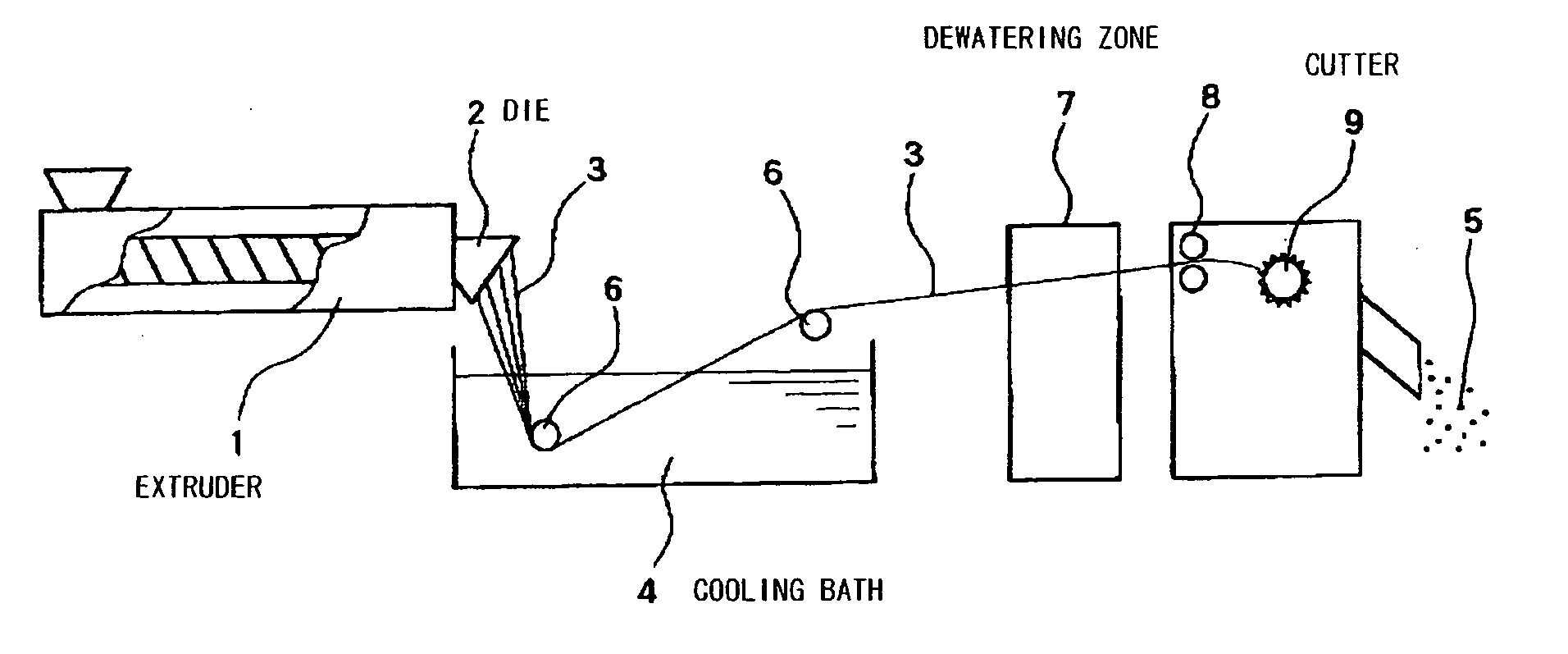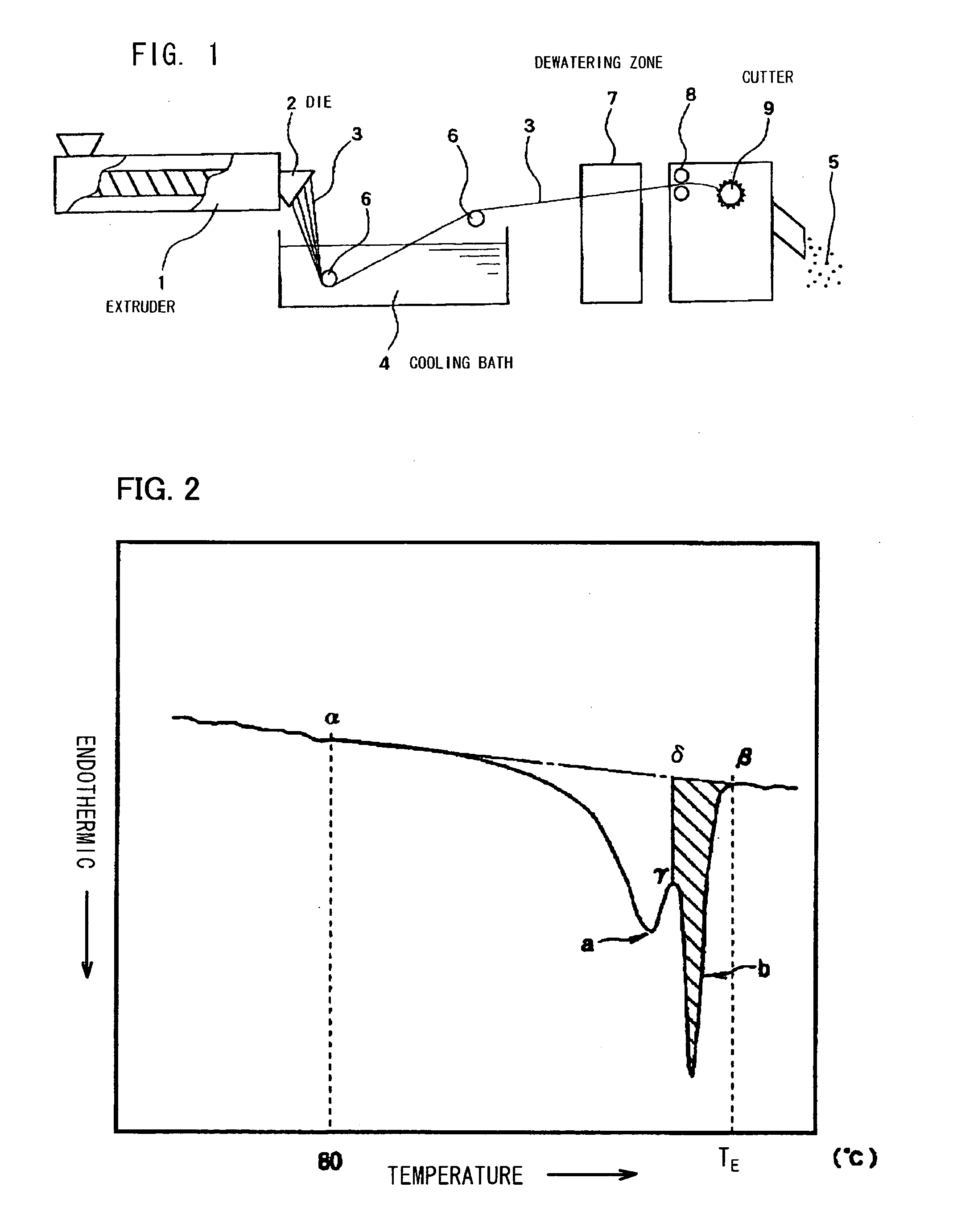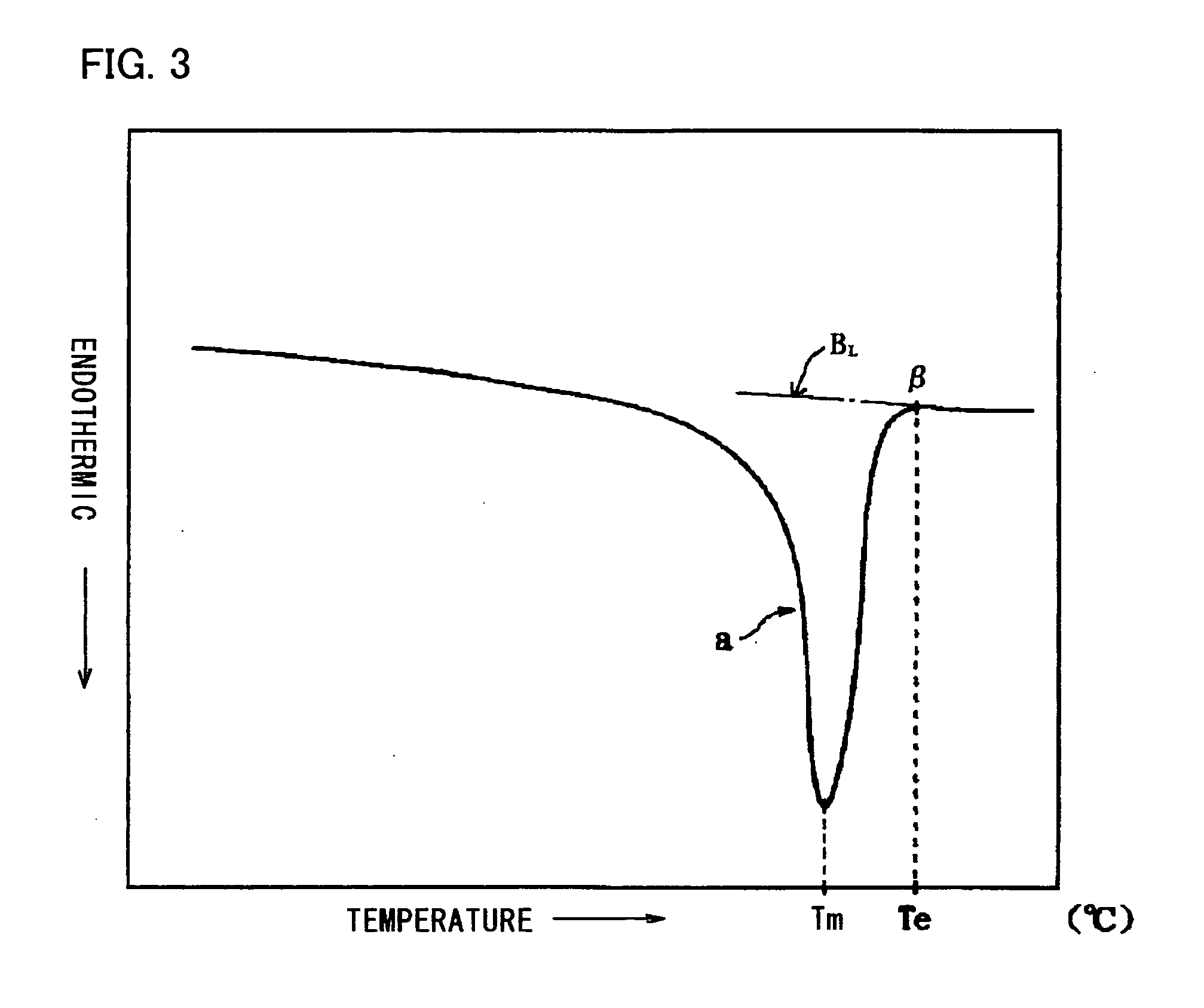Thermoplastic resin pellet, process for preparing thermoplastic resin pellets and expanded thermoplastic resin bead
a thermoplastic resin and thermoplastic resin technology, applied in the field of thermoplastic resin pellets, process for preparing thermoplastic resin pellets and expanded thermoplastic resin beads, can solve the problems of known strand cutting method, inability to prepare resin pellets having a very small weight, and the need to run strands at an excessively high speed, etc., and achieve high efficiency
- Summary
- Abstract
- Description
- Claims
- Application Information
AI Technical Summary
Benefits of technology
Problems solved by technology
Method used
Image
Examples
examples 1 to 7
[0083] Preparation of Resin Pellets:
[0084] To an extruder, 100 parts of a propylene-ethylene random copolymer (ethylene content: 2.5%; melting point: 143° C.; MFR: 7 g / 10 min.) and 0.05 part of zinc borate powder (cell controlling agent) were fed and kneaded at 230° C. to obtain a melt. The extruder had a barrel diameter and a screw length as shown in Table 1 and had an outlet provided with a die having a multiplicity of orifices. The number, diameter and minimum distance between the peripheries of adjacent two orifices (inter-periphery distance) were as shown in Table 1. The melt was extruded through the entire orifices in the atmosphere in the form of strands. The strands were immediately introduced into a cooling bath maintained at 20° C. for quenching and solidification. The cooling bath was composed of 100 parts of water and 0.005 part of polyoxyethylene lauryl ether (nonionic surfactant) and was contained in a vessel having a length of 1 m, a width of 0.4 m and a height of 1 ...
example 8
[0092] Preparation of Resin Pellets:
[0093] To an extruder, 100 parts of a propylene-ethylene random copolymer (ethylene content: 2.5%; melting point: 143° C.; MFR: 7 g / 10 min.) and 0.05 part of zinc borate powder (cell controlling agent) were fed and kneaded at 230° C. to obtain a melt. The extruder had a barrel diameter of 6.5 cm and a screw length of 240 cm and had an outlet provided with a die having a multiplicity of orifices. The number, diameter and minimum distance between the peripheries of adjacent two orifices (inter-periphery distance) were as shown in Table 3. The melt was extruded through the entire orifices in the atmosphere in the form of strands. The strands were immediately introduced into a cooling bath maintained at 20° C. for quenching and solidification. The cooling bath was composed of 100 parts of water and 0.03 part of polyether-modified silicone oil (nonionic surfactant; SR8410 manufactured by Toray Dow Corning Silicone Co., Ltd.) and was contained in a ves...
example 9
[0097] Example 8 was repeated in the same manner as described except that the resin melt contained 1 part of carbon black (coloring agent), 3 parts of brominated flame retardant (Trade Name: FIRE GUARD FG-3100; manufactured by Teijin Chemical Co., Ltd.) and 1.5 parts of antimony trioxide (flame retardant aid) in addition to 100 parts of the propylene-ethylene random copolymer and 0.05 part of the zinc borate powder and that the orifice number, the discharge amount per one orifice and the amount of dry ice were changed as shown in Table 3. The results are summarized in Table 3. The apparent density and the calorific value of the high temperature peak of the expanded beads thus obtained indicate that they are suited for in-mold molding.
TABLE 3Examples89OrificeDiameter (mm)0.80.8of DieNumber272275Inter-peripheral11distance (mm)Amount of surfactant (part)0.030.03Extrusion rate W (kg / hr)7070Discharge amount per orifice M0.260.25(kg / hr)Discharge balance B (kg / (hr · cm2)1.661.66Average w...
PUM
| Property | Measurement | Unit |
|---|---|---|
| temperature | aaaaa | aaaaa |
| weight | aaaaa | aaaaa |
| apparent density | aaaaa | aaaaa |
Abstract
Description
Claims
Application Information
 Login to View More
Login to View More - R&D
- Intellectual Property
- Life Sciences
- Materials
- Tech Scout
- Unparalleled Data Quality
- Higher Quality Content
- 60% Fewer Hallucinations
Browse by: Latest US Patents, China's latest patents, Technical Efficacy Thesaurus, Application Domain, Technology Topic, Popular Technical Reports.
© 2025 PatSnap. All rights reserved.Legal|Privacy policy|Modern Slavery Act Transparency Statement|Sitemap|About US| Contact US: help@patsnap.com



